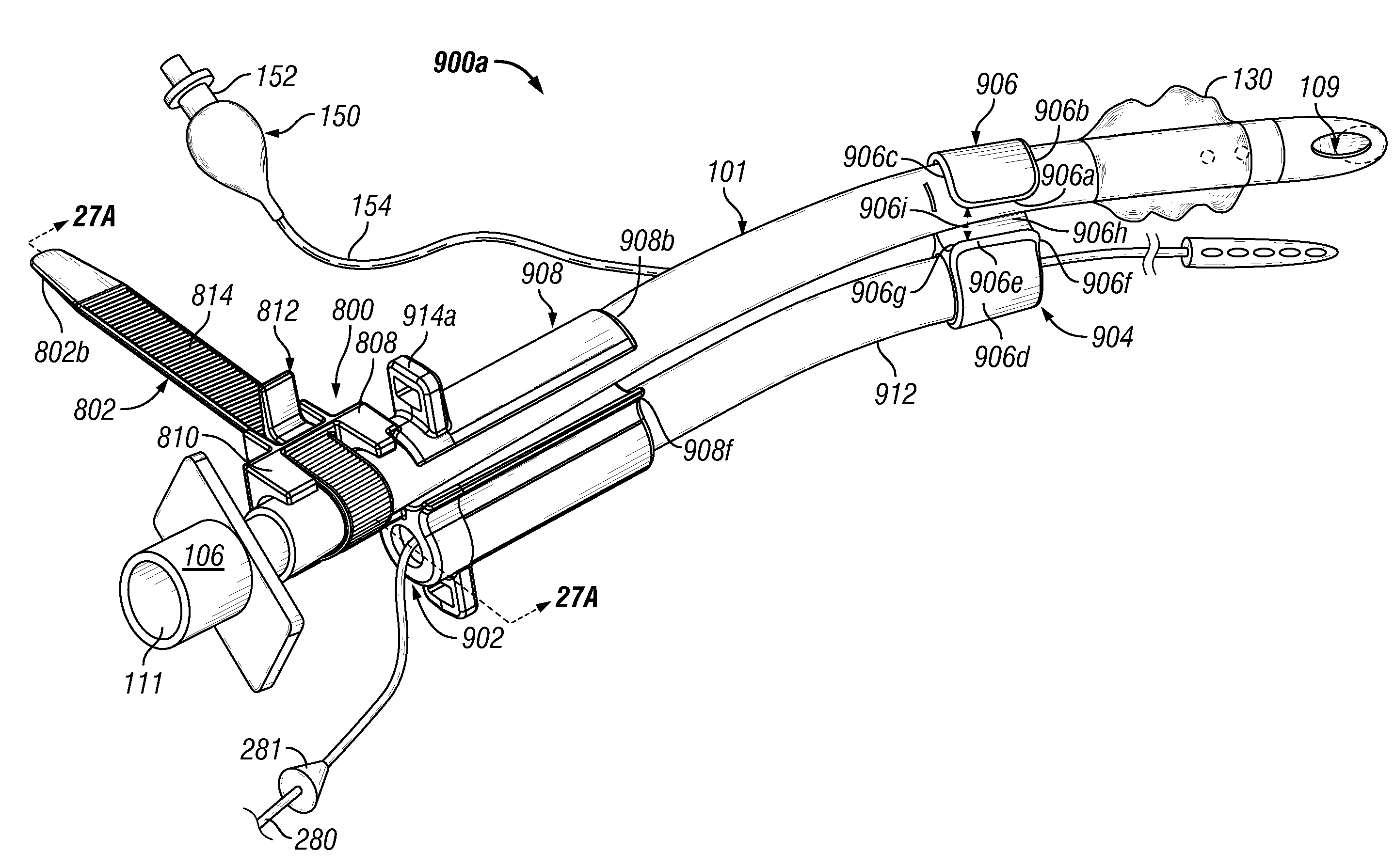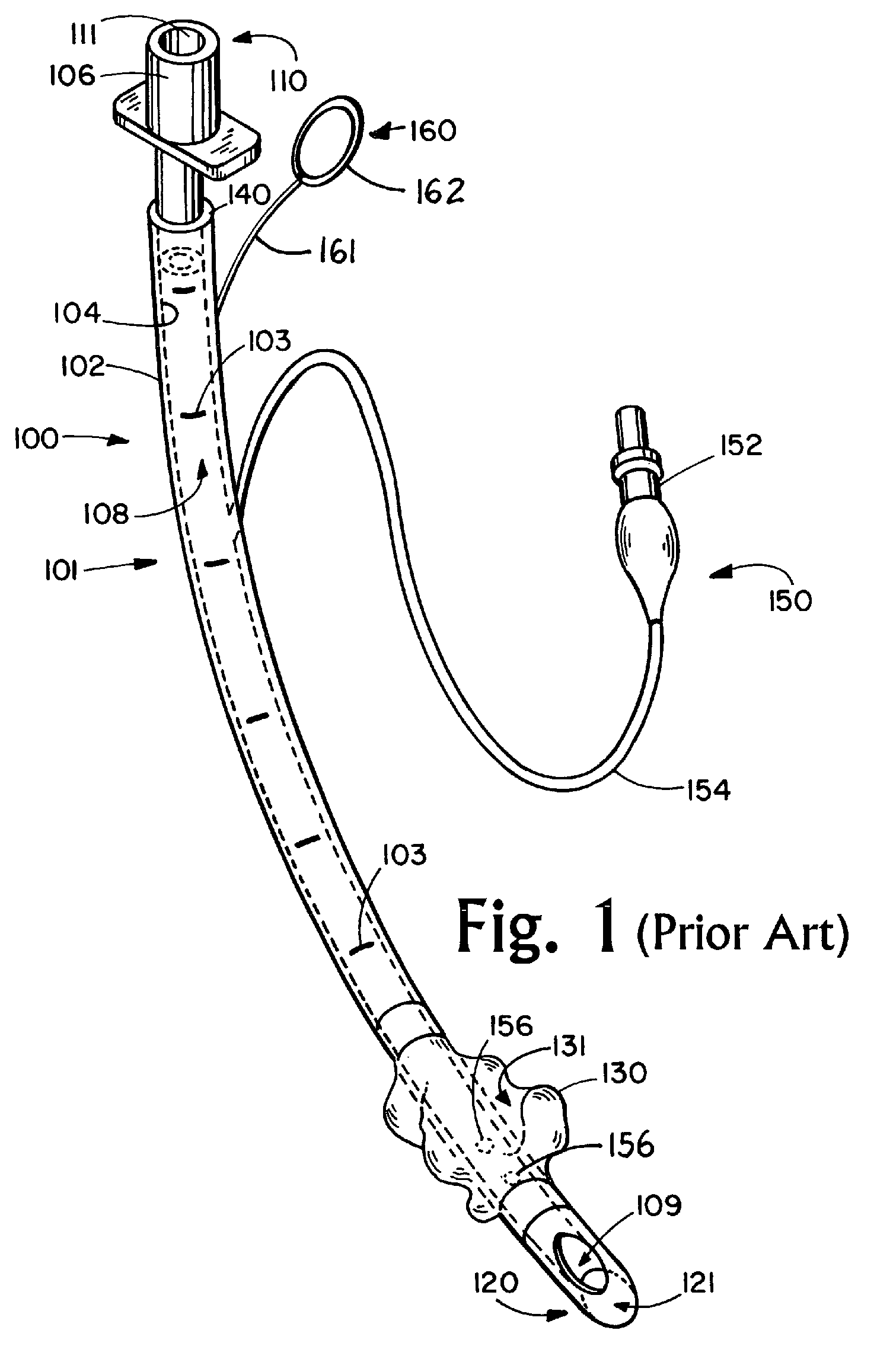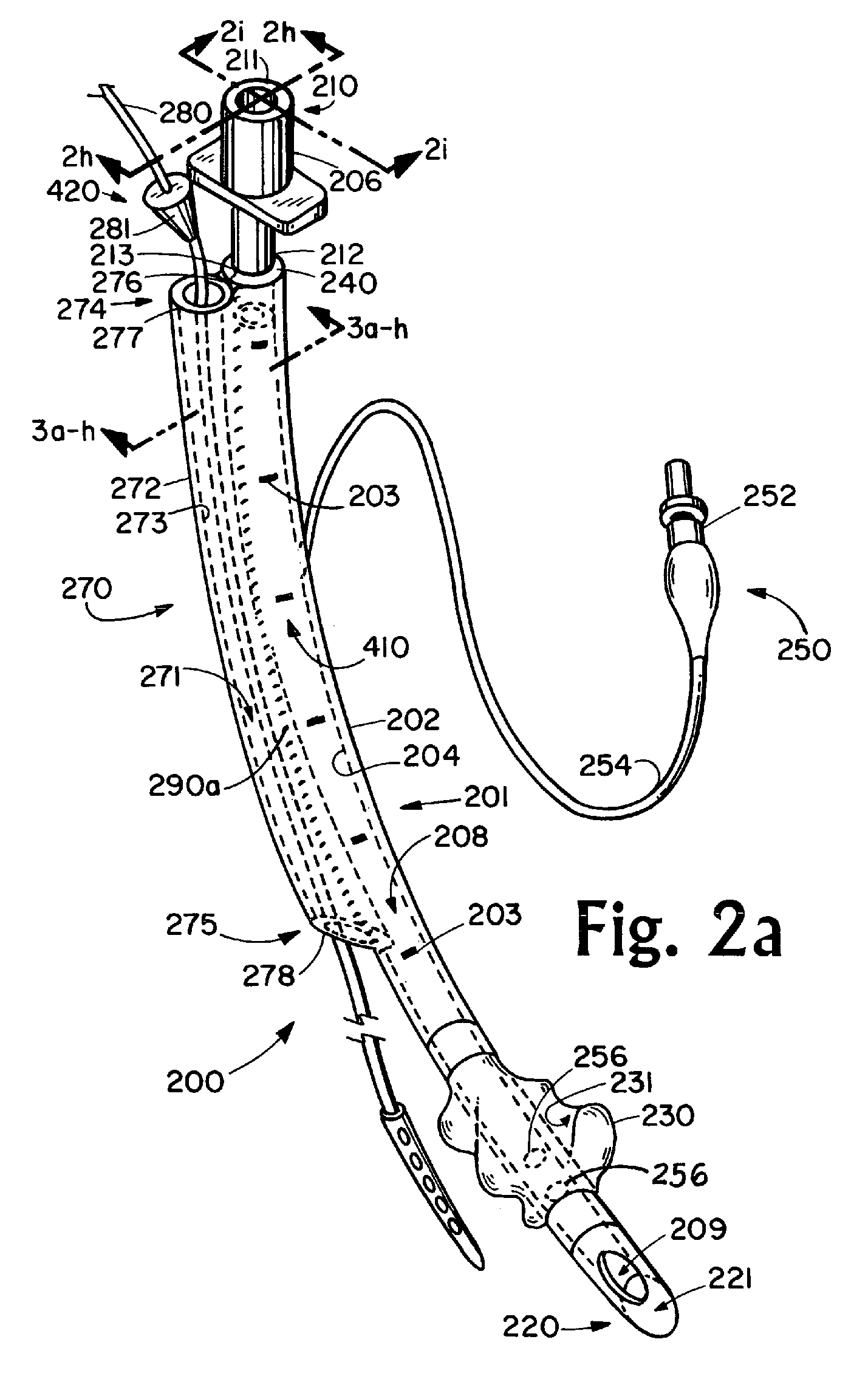Device and method for placing within a patient an enteral tube after endotracheal intubation
a technology of endotracheal intubation and enteral tube, which is applied in the direction of wound drains, hose connections, catheters, etc., can solve the problems of occlusion of facial sinus draining tracts, perforation of throat back, and potentially serious complications of placing an ng tube through the patient's nasal passageway, so as to facilitate the placement of the intubation device and facilitate the insertion of the devi
- Summary
- Abstract
- Description
- Claims
- Application Information
AI Technical Summary
Benefits of technology
Problems solved by technology
Method used
Image
Examples
Embodiment Construction
[0132]Referring now to FIG. 1, there is shown a representative endotracheal tube 100 known in the prior art having a lumen 101 having a substantially circular cross-section, an outside wall 102 having an outside wall diameter, an inside wall 104 having an inside wall diameter, a proximal end 110 and a distal end 120. The endotracheal tube 100 employs at its proximal end 110 a connector device 106 for connecting to a means of ventilation (not shown) such as ventilation source, bag valve and the like for providing a source of air to the patient's lungs through the internal conduit 108 within the lumen 101 of the endotracheal tube 100. The tube 100 has a proximal opening 111. At the distal end 120 of the endotracheal tube 100 the tube is typically bevel-shaped to facilitate introduction into the patient's trachea. Also shown in the distal region of the tube 100 is the distal opening 121 and a “Murphy's eye” suction opening 109 for suctioning fluids from below the cuff. The proximal ope...
PUM
 Login to View More
Login to View More Abstract
Description
Claims
Application Information
 Login to View More
Login to View More - R&D
- Intellectual Property
- Life Sciences
- Materials
- Tech Scout
- Unparalleled Data Quality
- Higher Quality Content
- 60% Fewer Hallucinations
Browse by: Latest US Patents, China's latest patents, Technical Efficacy Thesaurus, Application Domain, Technology Topic, Popular Technical Reports.
© 2025 PatSnap. All rights reserved.Legal|Privacy policy|Modern Slavery Act Transparency Statement|Sitemap|About US| Contact US: help@patsnap.com



